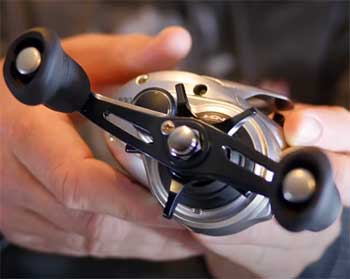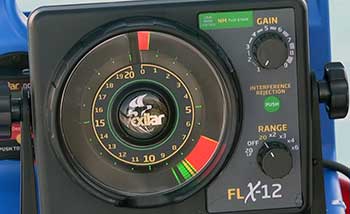In the world of fishing, the name ‘Shimano’ rings out with distinction. Shimano’s Tranx 300 and 400 reels have left anglers, both novice and experienced, in a pleasant conundrum: which reel is the ultimate game-changer?
To settle the Tranx 300 vs. 400 debate once and for all, let’s take a deep dive into the world of these renowned reels.
A Brief Comparison Table
| Features | Tranx 300 Reel | Tranx 400 Reel |
| Body Construction | Compact Metal Body | Slightly Larger Metal Body |
| Line Retrieval per Crank | ~30 inches | ~40 inches |
| Weight | ~11.6 oz | ~12 oz |
| Corrosion Resistance | High | Enhanced with CoreProtect Technology |
| Versatility | Lower | High (Suitable for both Freshwater and Saltwater) |
| Price | Generally Lower | Generally Higher |
Tranx 300: The Power Performer
Beginning with the Tranx 300, it’s a powerhouse, specifically designed for the angler who isn’t afraid to go after big game. So, what’s the catch? Let’s reel in the details.
Pros of the Tranx 300

- Strength and Durability
The Tranx 300 is built to withstand the harshest conditions.
It flaunts a solid metal body that boasts high resistance against corrosion, providing longevity that outlasts countless fishing trips.
- Power Handle
With a power handle designed for a solid grip, the Tranx 300 gives you ultimate control, even in the toughest fights.
This powerful reel doesn’t shy away from taking on the big fish, and neither will you with it in your hands.
- Efficient Gearing System
The Tranx 300 utilizes Shimano’s innovative HEG (High Efficiency Gearing) system. This ensures smooth operation, excellent torque, and a robust line capacity, adding an extra punch to your fishing endeavors.
Cons of the Tranx 300
While the Tranx 300 is an impressive piece of machinery, it does have some drawbacks to consider.
- Weight
Tipping the scales at around 11.6 oz, the Tranx 300 is considerably heavier than some competing reels. This might affect your fishing experience, especially during longer sessions.
- Limited Line Retrieval
While the Tranx 300’s line retrieval per crank is fair, it isn’t the best out there. At about 30 inches per crank, some anglers may find this disappointing.
Also Read: Differences Between Curado 300 And Tranx 300 Reels.
Tranx 400: The Versatile Virtuoso
Shifting the focus to the Tranx 400, it’s versatility personified. Built to adapt to diverse fishing scenarios, the Tranx 400 reel brings something extra to the table.
Pros of the Tranx 400

- Adaptability
The Tranx 400 is an adaptable ally.
It excels at both freshwater and saltwater fishing, meaning no matter where your angling adventures take you, this reel is your steadfast companion.
- Line Retrieval and Capacity
Unlike its counterpart, the Tranx 400 offers impressive line retrieval — around 40 inches per crank, which is a substantial improvement.
This reel’s larger line capacity also makes it ideal for targeting fish at deeper depths.
- CoreProtect Technology
The Tranx 400 utilizes Shimano’s proprietary CoreProtect technology, enhancing its resistance against the corrosive effects of saltwater. This gives the reel a longer lifespan and allows it to maintain optimal performance over time.
Cons of the Tranx 400
Despite its advantages, the Tranx 400 isn’t without its drawbacks.
- Slightly Heavier
Weighing in at about 12 oz, the Tranx 400 is slightly heavier than the 300. While this difference might not seem significant, it could potentially tire out anglers during prolonged use.
- Higher Price Point
The versatility of the Tranx 400 comes with a slightly higher price tag than the Tranx 300. Anglers on a budget might have to give this some thought before investing.
Key Differences Between Tranx 300 and 400 Reels
While the Tranx 300 and 400 reels are similar in many aspects, they aren’t quite the same. Identifying these differences is crucial to make an informed decision.
- Body Construction
Though both reels sport a solid metal construction, their physical dimensions differ. The Tranx 300, built with a more compact design, is ideal for those who prefer a smaller, yet powerful reel.
On the other hand, the Tranx 400, slightly larger, provides a broader line capacity, making it suitable for deeper fishing.
- Line Retrieval
The Tranx 300 retrieves about 30 inches of line per crank, while the Tranx 400 boasts a superior line retrieval of approximately 40 inches per crank. This difference is crucial for anglers who value swift line retrieval and want to bring in fish faster.
- Weight
Every ounce counts in fishing, especially during long sessions. Weighing at 11.6 oz, the Tranx 300 is slightly lighter than the Tranx 400, which tips the scale at about 12 oz. This seemingly insignificant weight difference might impact the user’s comfort over time.
- Resistance
Both reels feature high resistance against corrosion. However, the Tranx 400 edges out with Shimano’s proprietary CoreProtect technology, which enhances the reel’s resilience to saltwater, thus increasing its longevity.
- Versatility
When it comes to versatility, the Tranx 400 takes the cake. Its adaptable nature makes it a suitable companion for both freshwater and saltwater fishing. Conversely, the Tranx 300, while still robust, does not offer the same level of adaptability.
Also Read: Comparison of Shimano Beastmaster And Daiwa Seaborg 1200MJ Reels.
- Price
Last but not least, there’s a slight difference in price between the two reels. Given its superior features and versatility, the Tranx 400 tends to be a bit more expensive than the Tranx 300.
With the key differences laid bare, it’s time to put the Tranx 300 and 400 side-by-side for a final showdown.
The Tranx 300 and 400 reels, both stellar performers, cater to different fishing styles and preferences. The Tranx 300, with its power handle and robust build, is ideal for anglers who target larger species and value strength and durability.
On the flip side, the Tranx 400, with its excellent line retrieval and adaptable nature, is perfect for those who appreciate versatility and superior performance in various fishing conditions.
Wrapping Up
In conclusion, the decision between the Tranx 300 and 400 reels comes down to your personal angling style, target species, and the specific challenges you face on your fishing trips.
Choose wisely, and either reel is bound to enhance your fishing experience, adding to the thrill and joy of the catch.
Remember, in the world of fishing, gear matters, but the angler makes the difference!

